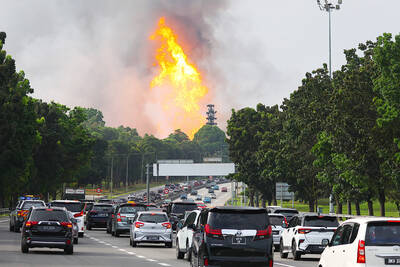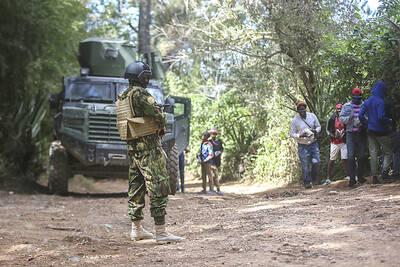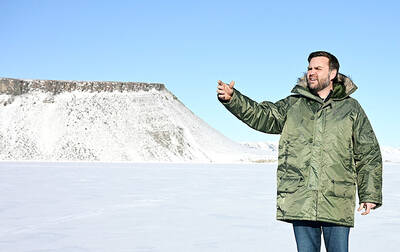Under the late John Paul II, the Vatican "ministry" that approves candidates for canonization was made to work so hard that one of his own cardinals dubbed it the "saint factory."
In characteristically robust fashion, the Polish pontiff took hold of a seemingly anachronistic procedure and used it in a thoroughly modern way, as a means of communication.
His canonizations were "role models" for Roman Catholics around the world and signaled to the faithful the sort of people of whom the pope approved.
Virtually no nation or community was forgotten as he proclaimed almost 500 saints -- more than in the previous five centuries.
On a single day in October 2000, John Paul canonized 120 from China, a Sudanese slave, a US heiress and the first female Basque saint.
But on Thursday, in what appeared to be the first major policy innovation of his year-old papacy, Benedict XVI quietly slid a spanner into the factory's works.
In a document made public on Thursday, several days after it was handed to the Vatican's saint makers, the pope stressed caution and the need for strict definitions in deciding who should be proclaimed a saint.
The new hard line could have implications for John Paul II himself whom Benedict set on the path to sainthood just 26 days after he died last year.
Conservative Roman Catholics frequently expressed dismay over the late pontiff's apparent disregard for rules laid down for canonization and beatification, the last step before sainthood.
In particular, John Paul seemed unconcerned about the requirement that a cult of devotion had to be shown to have grown up around the candidate. Benedict, by contrast, emphasized that "the cause [process] of beatification and canonization cannot be initiated in the absence of a verified reputation for sanctity, even if one is dealing with people who have distinguished themselves by their evangelical lucidity or by special ecclesiastical and social merits."
A miracle is normally required before someone is beatified and the pope stressed "the need for a physical miracle, a moral miracle not being sufficient." The exception is martyrdom and, here too, the pope tightened up.
Dying for the faith was not the same as martyrdom, he said, adding that a martyr was a victim of anti-Christian persecution and it was "just as necessary that the persecutor's hatred of the faith should emerge."
Perhaps John Paul's most controversial move was his breakneck beatification and canonization of the founder of the Opus Dei fellowship. Josemaria Escriva de Balaguer, who was proclaimed a saint in 2002, had been frequently accused of vanity and showing undue tolerance towards the regime of Spain's late dictator, Francisco Franco. The beatification of Mother Teresa in 2003 also sparked debate because it waived the rule that five years should elapse after death.
John Paul's journeys were often accompanied by canonizations or beatifications of people from the countries he visited. The evidence adduced for these elevations often raised eyebrows in the Vatican.

A fire caused by a burst gas pipe yesterday spread to several homes and sent a fireball soaring into the sky outside Malaysia’s largest city, injuring more than 100 people. The towering inferno near a gas station in Putra Heights outside Kuala Lumpur was visible for kilometers and lasted for several hours. It happened during a public holiday as Muslims, who are the majority in Malaysia, celebrate the second day of Eid al-Fitr. National oil company Petronas said the fire started at one of its gas pipelines at 8:10am and the affected pipeline was later isolated. Disaster management officials said shutting the

DITCH TACTICS: Kenyan officers were on their way to rescue Haitian police stuck in a ditch suspected to have been deliberately dug by Haitian gang members A Kenyan policeman deployed in Haiti has gone missing after violent gangs attacked a group of officers on a rescue mission, a UN-backed multinational security mission said in a statement yesterday. The Kenyan officers on Tuesday were on their way to rescue Haitian police stuck in a ditch “suspected to have been deliberately dug by gangs,” the statement said, adding that “specialized teams have been deployed” to search for the missing officer. Local media outlets in Haiti reported that the officer had been killed and videos of a lifeless man clothed in Kenyan uniform were shared on social media. Gang violence has left

US Vice President J.D. Vance on Friday accused Denmark of not having done enough to protect Greenland, when he visited the strategically placed and resource-rich Danish territory coveted by US President Donald Trump. Vance made his comment during a trip to the Pituffik Space Base in northwestern Greenland, a visit viewed by Copenhagen and Nuuk as a provocation. “Our message to Denmark is very simple: You have not done a good job by the people of Greenland,” Vance told a news conference. “You have under-invested in the people of Greenland, and you have under-invested in the security architecture of this

Japan unveiled a plan on Thursday to evacuate around 120,000 residents and tourists from its southern islets near Taiwan within six days in the event of an “emergency”. The plan was put together as “the security situation surrounding our nation grows severe” and with an “emergency” in mind, the government’s crisis management office said. Exactly what that emergency might be was left unspecified in the plan but it envisages the evacuation of around 120,000 people in five Japanese islets close to Taiwan. China claims Taiwan as part of its territory and has stepped up military pressure in recent years, including